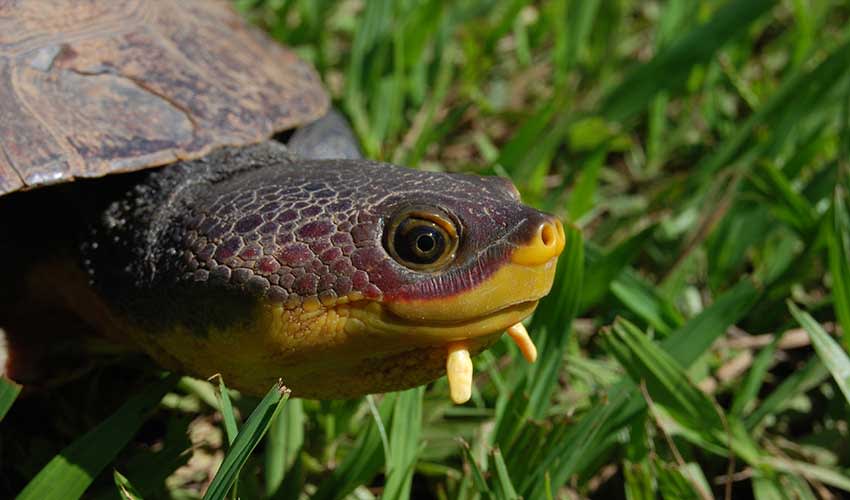One of the rarest and most fascinating freshwater turtles in the world, and it’s found only in Brazil. This distinctive trait gives them their name and sets them apart in the reptile world. It was first described in 1953 by the Brazilian herpetologist Alphonse Richard Hoge, and it has since become one of the most elusive and endangered turtles on the planet. In fact, Hoge’s side-necked turtle is the only critically endangered turtle species endemic to Brazil, making it both scientifically important and deeply symbolic for conservation efforts in South America.
Physically, Hoge’s side-necked turtle is a sturdy, medium-sized species. Its shell, or carapace, is typically dark brown or grayish, smooth, and slightly domed, helping it blend into murky riverbeds and forest streams. The plastron (the bottom shell) is lighter, often with patches of yellow or cream. However, its most eye-catching feature is its long neck, which folds horizontally beneath the edge of its shell rather than retracting straight in. The turtle’s head is broad and slightly flattened, with a pointed snout and large, expressive eyes that give it a curious, almost wise appearance. Its webbed feet make it a capable swimmer, and its strong jaws allow it to feed on a varied diet of insects, fish, aquatic plants, and crustaceans.
Hoge’s side-necked turtle lives mainly in slow-moving rivers and forested streams of southeastern Brazil, particularly in the Paraíba do Sul River Basin. Unfortunately, this same region has undergone severe deforestation, pollution, and dam construction over the past century, which have drastically reduced the turtle’s natural habitat. The species was once thought to be on the verge of extinction—so rare, in fact, that for decades researchers had no confirmed sightings. But in the early 2000s, conservationists rediscovered small populations in isolated river systems, sparking new hope for its survival.
Distribution
 Brazil
Brazil Official estimate
Official estimate
Anything we've missed?
Help us improve this page by suggesting edits. Glory never dies!
Suggest an editGet to know me
Terrestrial / Aquatic
Altricial / Precocial
Polygamous / Monogamous
Dimorphic (size) / Monomorphic
Active: Diurnal / Nocturnal
Social behavior: Solitary / Pack / Herd
Diet: Carnivore / Herbivore / Omnivore / Piscivorous / Insectivore
Migratory: Yes / No
Domesticated: Yes / No
Dangerous: Yes / No




